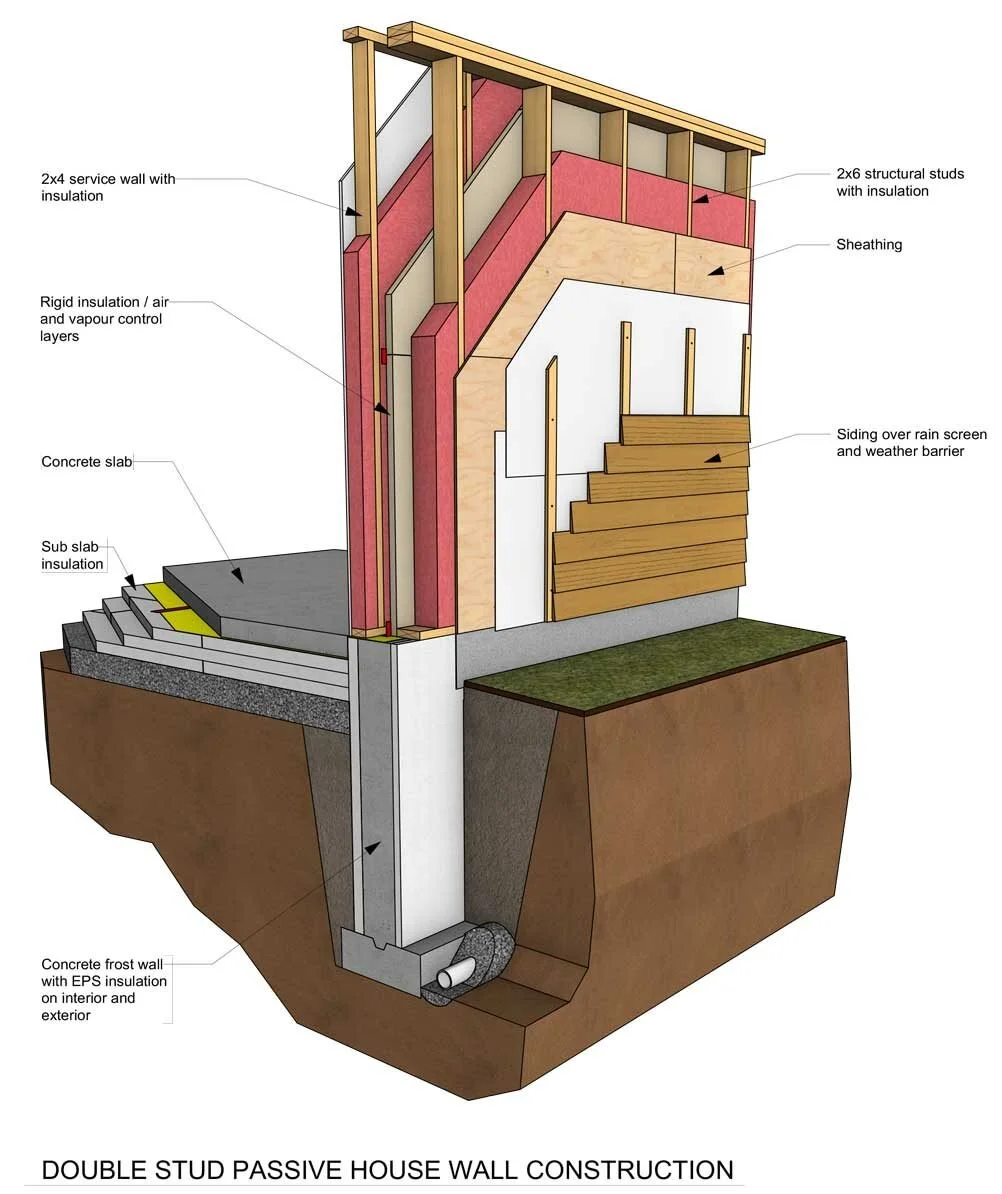Thermal Insulation
The building envelope is what separates the interior of the building from the exterior; it consists of outside walls, roofs, and floors. In cold climates, where inside air is heated to keep the building comfortable, some of that heat will be lost as it moves through the envelope (via the process of conduction). In order to reduce this heat loss, insulation made of low-conductivity materials is installed within the wall and roof assemblies.
Passive House makes the most of the envelope by super-insulating the building in order to minimise the heat loss. For a Passive House, the aim is to use assemblies with enough insulation to double or triple the heat resistance compared to what is required in current New Zealand building codes. The result is a significant increase in the thermal performance expected from the building envelope. Insulating to Passive House levels has the added advantages of greater soundproofing, improved durability, and greater building resiliency - including the ability to maintain interior comfort for extended periods even if there is a power failure.
Achieving Passive House levels of heat resistance is not just about how much insulation you have, but whether that insulation is used effectively. Insulation is most effective when it wraps the building uninterrupted by other materials, but there will always be areas where this is not possible, such as around components used for structural reasons. When a material bypasses the insulation, it is known as a thermal bridge and can significantly reduce the effectiveness of insulation, especially if that material is very conductive, like metal.
Minimising repeating thermal bridges and aiming for continuous insulation where possible helps make the most of the insulation within the building envelope.
Credit - Article and Image Sources: Fine Home Building, Passive House Buildings, Passive House Academy, Passive Haus, Level

